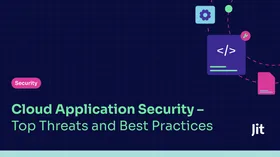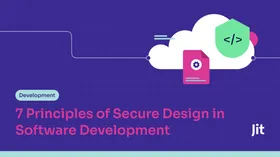7 Tips to Protect Yourself from Dirty Cow Exploit
Updated October 22, 2024.

When vulnerabilities like Dirty Cow (CVE-2016-5195) emerge, they remind us of one critical truth: even the most reliable systems can be compromised. Discovered in the Linux kernel, Dirty Cow is infamous for enabling unauthorized privilege escalation, allowing attackers to manipulate and execute code at the root level.
The danger posed by privilege escalation attacks is very real. 55% of insider threats rely on these types of vulnerabilities to gain control of systems, often leading to severe data breaches, manipulation of critical applications, or even the complete compromise of essential services.
The potential impact of vulnerabilities like Dirty Cow is amplified by growing and increasingly complex cloud environments, making it critical to secure against these threats.
What is the Dirty Cow Exploit?
The Dirty Cow exploit is a vulnerability in the Linux kernel that has existed since 2007 but was only publicly disclosed in 2016. It targets the “copy-on-write” (COW) mechanism, which allows multiple processes to share the same memory but create separate copies when modifications are made.
The name 'Dirty Cow' is derived from the vulnerability's exploitation of the Copy-On-Write mechanism, hence 'COW', and the 'dirty' refers to the unintended modification of read-only memory. Dirty Cow takes advantage of a race condition while handling COW operations, allowing attackers to gain write access to read-only files.
This seemingly small loophole can have catastrophic consequences, allowing attackers to escalate their privileges and, in many cases, gain root access to systems. Effective vulnerability prioritization is critical to promptly minimizing the risks of Dirty Cow Exploit and similar security gaps.
Why You Need to Protect Against Threats Like the Dirty Cow Exploit in 2024
When the Dirty Cow exploit was first disclosed in 2016, it sent shockwaves through the cybersecurity community. One prominent case of Dirty Cow involved a proof-of-concept exploit that gained root access on vulnerable Linux systems. This vulnerability existed for nine years before it was disclosed to the public, leaving an open attack vector for exploitation during that time. This affected major Linux distributions like Red Hat, Debian, and Ubuntu.
Another case involved a web hosting provider, where attackers leveraged Dirty Cow to gain root access to systems, compromising customer data and critical systems. Dirty Cow also posed a severe risk to Android devices, affecting millions of phones running on Linux-based kernels and allowing malicious apps to escalate privileges.
Although patches were released in 2016, Dirty Cow remains a relevant threat due to outdated or unpatched systems. Attackers often exploit gaps in patch management, especially in complex hybrid and multi-cloud setups or distributed cloud infrastructures, where maintaining consistent updates can be challenging.
Even in 2024, privilege escalation exploits like Dirty Cow are used to breach unpatched systems, allowing attackers to move laterally within networks and compromise critical infrastructure and data. To protect against these risks, DevOps and security teams must address several key challenges:
- Patch management: Delays in patching systems can leave environments vulnerable, particularly in production where uptime is critical.
- Complexity: Managing security across multiple clouds, containers, and virtual machines can create gaps, primarily when different Linux kernels are used. Linux vulnerability scanners may not support all kernel versions or specialized configurations.
- IaC Misconfigurations: Misconfigured Infrastructure as Code (IaC) scripts can unintentionally deploy unpatched or insecure systems, increasing exposure to vulnerabilities like Dirty Cow.
7 Tips to Protect Yourself from the Dirty Cow Exploit
1. Enforce SELinux or AppArmor Policies
By using SELinux to enforce strict policies, you can tightly control what processes can access, even if an attacker gains root privileges through Dirty Cow. SELinux’s Mandatory Access Control (MAC) system limits what processes can access or modify at the kernel level, preventing unauthorized actions such as tampering with system files.
Similarly, AppArmor confines applications to predefined permission sets, restricting their ability to perform harmful operations. Both tools ensure that critical resources remain protected, even in the event of a kernel-level exploit, shrinking the attack surface.
2. Harden Kernel Configurations with Sysctl Tuning
Sysctl tuning allows administrators to modify kernel parameters to harden the Linux environment against exploits like Dirty Cow. By adjusting memory and process-related settings, you can limit the exposure of critical system areas. For example, you can turn off unprivileged user access to specific memory areas using kernel.unprivileged_userns_clone=0, effectively blocking potential escalation paths.
Another helpful setting is restricting kernel pointer exposure with kernel.kptr_restrict=1, which prevents attackers from gaining insights into sensitive memory locations. Regularly reviewing and adjusting these configurations can drastically reduce attack surfaces.
3. Implement Live Patching
Regular patching is the best defense, but kernel live patching offers an excellent alternative in environments where downtime isn't an option – like production systems. Tools like Canonical’s Livepatch and SUSE’s kGraft allow you to apply critical security patches, including those for Dirty Cow, without rebooting the system.
Live patching lets you address critical vulnerabilities right away without the risk of delaying security updates until a scheduled maintenance window.
4. Leverage Kernel Namespaces
Kernel namespaces provide process isolation, limiting the impact of an exploit by separating processes into their own isolated spaces. Namespaces such as pid, net, and mnt help restrict what an attacker can access, even if they manage to escalate privileges within a single namespace.
For example, kernel namespaces can isolate containers from the host system in containerized environments, minimizing the damage that Dirty Cow or similar exploits could inflict. This technique is widely used in Docker and Kubernetes setups, reinforcing security across different infrastructure layers.
5. Automate Patch Rollout via IaC Tools
Automating patch management is essential in complex infrastructures where manual updates can introduce delays. Tools like KICS for IaC security and Terraform can automatically scan your IaC scripts for misconfigurations or missing patches, ensuring you protect newly deployed instances against threats like Dirty Cow.
With an application security posture management (ASPM) like Jit, you can seamlessly integrate these security tools into your GitHub development workflows to automate the entire patching process. This level of automation reduces human error and accelerates the application of critical updates, helping your team quickly close security gaps while staying focused on development.
6. Use eBPF for Real-Time Detection
eBPF (Extended Berkeley Packet Filter) is a powerful tool that monitors and detects suspicious kernel activities in real-time. By running eBPF programs in the kernel, security teams can track system calls, detect anomalies, and assess risks by identifying possible attempts to exploit vulnerabilities like Dirty Cow.
For instance, eBPF can be configured to monitor for unexpected writes to sensitive memory areas or unusual patterns in file access, offering early warning signs of privilege escalation.
7. Employ Kernel-Level Integrity Monitoring
Kernel-level integrity monitoring tools such as IMA (Integrity Measurement Architecture) and EVM (Extended Verification Module) offer a way to verify that the system’s kernel and other critical components haven't been tampered with.
These tools create a cryptographic record of the system state, which they then validate at runtime. Continuous monitoring with these solutions ensures that any unauthorized changes to the kernel or critical files are immediately detected, allowing for quick response to potential exploits.
Don’t Let Dirty Cow Catch You Unprepared in 2024
Vulnerabilities like Dirty Cow aren’t going away, and with privilege escalation attacks on the rise, waiting to react isn’t an option. Securing your infrastructure requires a proactive, automated approach.
By integrating real-time kernel-level protections, enforcing restrictive access policies, and leveraging tools like eBPF, you can transform your security posture from reactive to proactive. However, transitioning from manual processes to full automation is the most impactful step.
Manual security management just doesn’t cut it anymore. Jit’s unified ASPM platform takes the guesswork out of vulnerability management by integrating essential security tools right into your CI/CD pipeline and automating continuous security scanning. With real-time detection and automation, Jit keeps your team ahead of exploits like Dirty Cow before they become a bigger problem. Learn more here.









